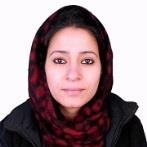International Journal of Intelligent Systems and Applications (IJISA)
IJISA Vol. 9, No. 6, 8 Jun. 2017
Cover page and Table of Contents: PDF (size: 1623KB)
Optimal Realization of Universality of Peres Gate Using Explicit Interaction of Cells in Quantum Dot Cellular Automata Nanotechnology
Full Text (PDF, 1623KB), PP.75-84
Views: 0 Downloads: 0
Author(s)
Index Terms
QCA, Peres gate, universal gate, quantum dots, reversible computing, nanotechnology, circuit design, clocking
Abstract
The essence of the technology business lies in the improvements and advancements that are continuously taking place in the industry. From vacuum tubes, diodes and transistors to the concepts of nano level designing have by and large created a revolution in the history of mankind. The biggest milestone in this journey has been the CMOS technology which has managed to survive for decades and is still an ongoing research area. However, advancing the technology includes many other dimensions which need to be taken care of. As the devices go on decreasing in size with the improving technology the power dissipation in them becomes a major issue. To counter this, a new logic called reversible logic has come into the pool of research. Further a shift from the transistor based paradigm is being explored to go down to ultra-small structures. A major breakthrough in this can be the Quantum Dot Cellular Automata (QCA) Nanotechnology. In this paper we have given a review about how the reversible logic and QCA nanotechnology together result in ultra-low power designs. Further we have optimized the design of Peres reversible gate using the concepts of explicit interaction of cells in QCA and verified the universal functionality using the optimized designs.
Cite This Paper
Bisma Bilal, Suhaib Ahmed, Vipan Kakkar, "Optimal Realization of Universality of Peres Gate Using Explicit Interaction of Cells in Quantum Dot Cellular Automata Nanotechnology", International Journal of Intelligent Systems and Applications(IJISA), Vol.9, No.6, pp.75-84, 2017. DOI:10.5815/ijisa.2017.06.08
Reference
[1]Yong B. Kim, “Challenges for nanoscale MOSFETs and emerging nanoelectronics”, Transaction on Electrical and Electronic Materials, vol. 11, no. 3, pp. 93–105, 2010.
[2]J. Gautier, “Beyond CMOS: quantum devices”, Microelectronic Engineering, Volume 39, Issues 1–4, December 1997, pp. 263-272.
[3]David Bishop, “Nanotechnology and end of Moore’s law”, Bell Labs Technical Journal, vol. 10, no. 3, pp. 23 - 28, 2005.
[4]G.E. Moore,” Cramming More Components onto Integrated circuits”, Proceedings of the IEEE, vol. 86, no.1, pp. 8 –85.
[5]John M. Shalf, Robert Leland, “Computing beyond Moore's Law” Computer, Volume: 48, Issue: 12, pp. 14 - 23, 2015.
[6]H. Iwai, End of the scaling theory and Moore's law, Proc. of 16th IEEE International Workshop on Junction Technology, (2016) 1-4.
[7]C. Lent, P.D. Tougaw, W. Porod, G.H. Bernstein “Quantum Cellular Automata,” Nanotechnology, Vol. 4, pp. 49–57, 1993.
[8]Wolfgang porod, “Quantum-dot devices and quantum-dot cellular automata”, International Journal of Bifurcation and Chaos, Vol. 7, no. 10, pp. 1147-1175, 1997.
[9]P.D. Tougaw, C.S. Lent, “Logical devices implemented using quantum cellular automata”, Journal of Applied Physics , vol 75, no. 3, pp. 1818-1825,1994.
[10]R. Landauer,” Irreversibility and Heat Generation in the Computing Process”, IBM Journal of Research and Development, Vol 5, No. 3, pp. 183-191,1961
[11]C.H. Bennett , “Logical Reversibility of Computation”, IBM Journal of Research and Development, vol. 17, pp. 525-532, 1973
[12]R. Feynman, “Quantum Mechanical Computers,” Optical New, pp. 11- 20, 1985.
[13]B. Parhami, “Fault Tolerant Reversible Circuits,” Proc. 40th Asilomar Conf. Signals, Systems, and Computers, Pacific Grove, CA, pp.1-4, 2006
[14]T.Toffoli, “Reversible Computing,” Technical Report MITLCSTM151, MIT Laboratory for Computer Science, pp. 632-644, 1980.
[15]E. Fredkin, T. Toffoli, “Conservative Logic,” International Journal of Theoretical Physics, vol. 21, pp. 219–253, 1982.
[16]A. Peres, “Reversible Logic and Quantum Computers,” Physical review, vol. A 32, pp. 3266-3276, 1985.
[17]A. K. Biswas, M. M. Hasan, A. R. Chowdhury and H. M. H. Babu, “Efficient approaches for designing reversible Binary Coded Decimal adders,” Microelectronics Journal, vol. 39, pp. 1693-1703, 2008.
[18]M. Haghparast and K. A. Navi, “Novel reversible BCD adder for nanotechnology based systems,” American Journal of Applied Sciences, vol. 5, pp. 282-288, 2008.
[19]Darushini Kunalan, Chee Lee Cheong, Chien Fat Chau, Azrul Bin Ghazali ,”Design of a 4-bit Adder using Reversible Logic in Quantum-Dot Cellular Automata (QCA)”, IEEE International Conference on Semiconductor Electronics (ICSE), pp.60-63, 2014.
[20]Ali Newaz Bahar, Sajjad Waheed, Md. Ahsan Habib ,”A Novel Presentation of Reversible Logic Gate in Quantum dot Cellular Automata (QCA),” IEEE International Conference on Electrical Engineering and Information & Communication Technology (ICEEICT), pp. 1-6, 2014
[21]K.S Mahalakshmi, Shiva Hajeri, H V Jayashree, Vinod Kumar Agrawal, “Performance Estimation of Conventional and Reversible Logic Circuits using QCA Implementation Platform,” IEEE International Conference on Circuit, Power and Computing Technologies (ICCPCT), pp.1-9, 2016
[22]Manisha G. Waje, P.K. Dakhole,” Implementation and Performance analysis of single layered reversible Parity generator and Parity checker Circuits using Quantum Dot Cellular Automata paradigm”, IEEE International Conference on Control, Instrumentation, Communication and Computational Technologies (ICCICCT), pp.175-180, 2015
[23]Amir Mokhtar Chabi, Arman Roohi, Ronald F. DeMara, Shaahin Angizi, Keivan Navi, Hossein Khademolhosseini, “Cost-Efficient QCA Reversible Combinational Circuits Based on a New Reversible Gate”, IEEE 18th CSI International Symposium on Computer Architecture and Digital Systems (CADS), pp.1-6, 2015
[24]A. Shafi, M. Shifatul, A. Newaz, “A Review on reversible logic gates and its QCA implementation,” International Journal of Computer Applications, vol. 128, no.2, pp. 27-34, 2015.
[25]A. Sarker, “A novel presentation of Peres gate (PG) in quantum-dot cellular automata (QCA)”, Eur. Sci. J., vol. 10, no. 21, pp. 101-106, 2014.
[26]Firdous Ahmad, Ghulam Bhat, Hossein Khademol Hosseini, Saeid Azimi, Shaahin Angizi, Keivan Navi, “Towards single layer quantum-dot cellular automata adders based on explicit interaction of cells”, Journal of Computational Science , vol. 16, pp. 8–15, 2016.
[27]J. Iqbal Reshi, M. Tariq Banday, “Realization of Peres gate as universal structure using quantum Dot cellular automata,” Journal of Nanoscience and Technology, vol. 2, no. 2, pp. 115–118, 2016.
[28]R. Devadoss, K. Paul; M. Balakrishnan, “Coplanar QCA crossovers”, Electronics Letters, vol. 45, no. 24, pp. 1234 - 1235, 2009.
[29]M. M. Arjmand, Mohsen Soryani, Keivan Navi, “Coplanar wire crossing in quantum cellular automata using a ternary cell”, IET Circuits, Devices & Systems, vol. 7, no. 5, pp. 263 – 272, 2013
[30]Dariush Abedi, Ghassem Jaberipur, Milad Sangsefidi, “Coplanar full adder in quantum-dot cellular automata via clock-zone-based crossover”, IEEE transactions on nanotechnology, vol. 14, no. 3, 2015.
[31]R. Devadoss, K. Paul, M. Balakrishnan, “Clocking-Based Coplanar Wire Crossing Scheme for QCA”, 23rd IEEE International Conference on VLSI Design, pp. 339 – 344, 2010.
[32]Vinay Kumar, Divya Dhawan, “Design of Reversible Adder Subtractor Using Multifunction Reversible Logic Gate (MRLG)”, International Journal of Advances in Computer and Electronics Engineering, no. 2, pp. 5–11, 2016.
[33]Neeraj Kumar Misra, Subodh Wairya, V.K. Singh, “Frame of reversible BCD Adder and Carry Skip BCD Adder and Optimization using new reversible gates for Quantum Dot Cellular Automata”, Australian Journal of Basic and Applied Science, vol. 9, no.31, pp.286-298,2 015.
[34]Majid Haghparast, Keivan Navi,”A Novel Reversible Full Adder Circuit for Nanotechnology Based Systems”, Journal Of Applied Sciences, vol. 7, no. 24, pp.3995-4000, 2007.
[35]Majid Mohammadi, Mohammad Eshghi, Majid Haghparast, Abbas Bahrololoom, “Design and Optimization of Reversible BCD Adder/Subtractor Circuit for Quantum and Nanotechnology Based Systems”, World Applied Sciences Journal, vol. 4, no. 6, pp.787-792, 2008.
[36]V.Kamalakannan, Dr P.V.Rao, Veeresh Patil, “Analysis of Reversible Binary Adder/Subtractor Circuit”, International Journal of Advanced and Innovative Research, pp. 129-134, 2012.
[37]Himanshu Thapliyal, M.B Srinivas, “Novel Reversible TSG gate and its Applications for designing Reversible Carry Look Ahead Adder and other Adder Architectures”, Proc. of 10th Asia Pacific Computer Systems Architecture Conference (ACSAC), vol. 3740, Springer Verlag, pp. 775-786, 2005.
[38]H.G. Rangaraju, Aakash Babu Suresh, K.N. Muralidhara, “Design and Optimization of Reversible Multiplier Circuit”, International Journal of Computer Applications, vol. 52, no.10, pp. 44-50, 2012.
[39]M.S. Islam, M.M. Rahman, Z. Begum, M.Z. Hafiz, “Low cost quantum realization of reversible multiplier circuit”, Information Technology Journal, vol. 8, no. 2, pp.208-213, 2009,
[40]H.R. Bhagyalakshmi, M.K. Venkatesham, “An Improved Design of a Multiplier Using Reversible Logic Gates”, International Journal of Engineering Science and Technology, vol. 2, no. 8, pp. 3838-3845, 2010.
[41]Himanshu Thapliyal, Nagarajan Ranganathan, “Design of Efficient Reversible Binary Subtractors Based on A New Reversible Gate”, IEEE Computer Society Annual Symposium on VLSI, pp.229-234, 2009.


